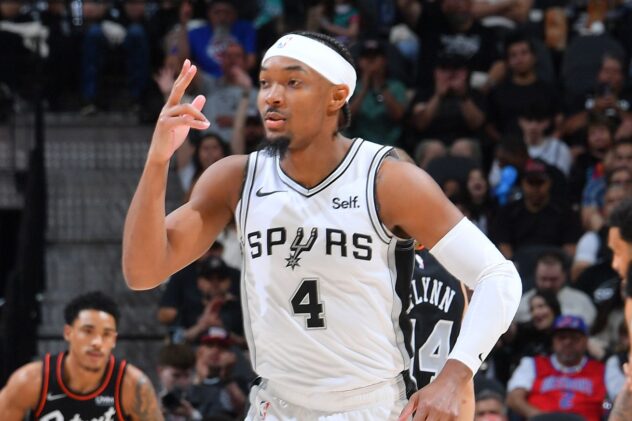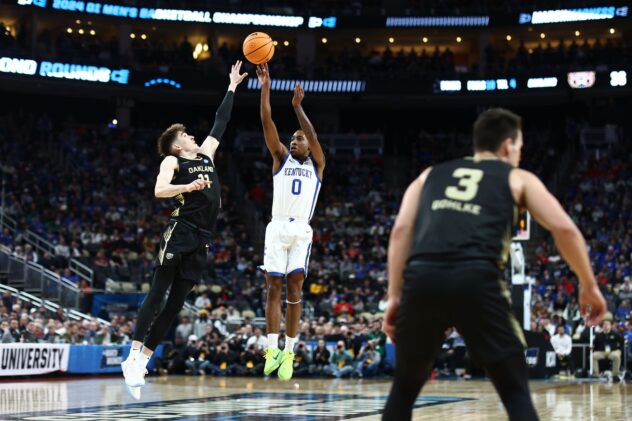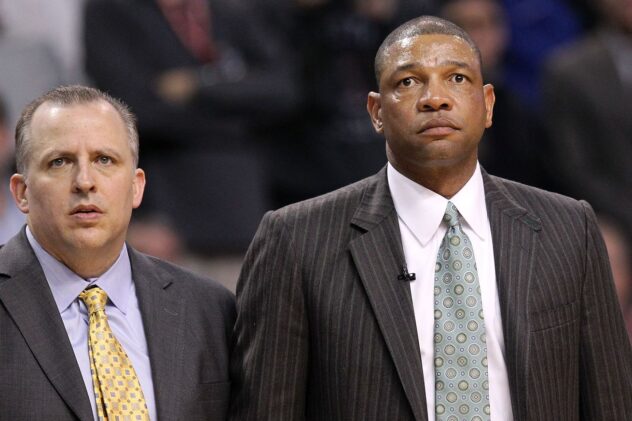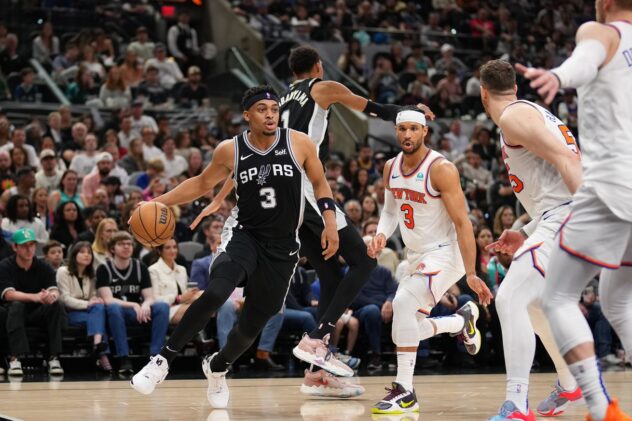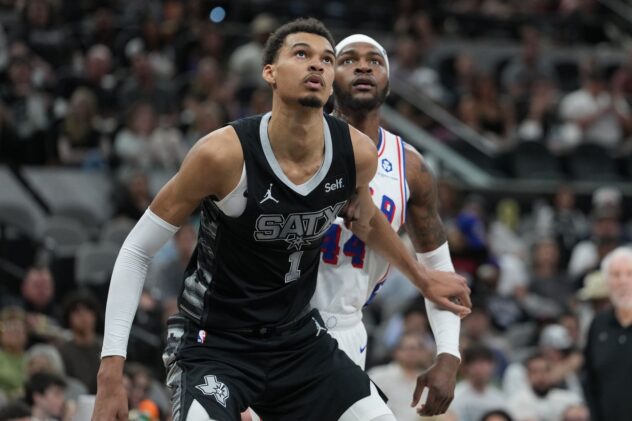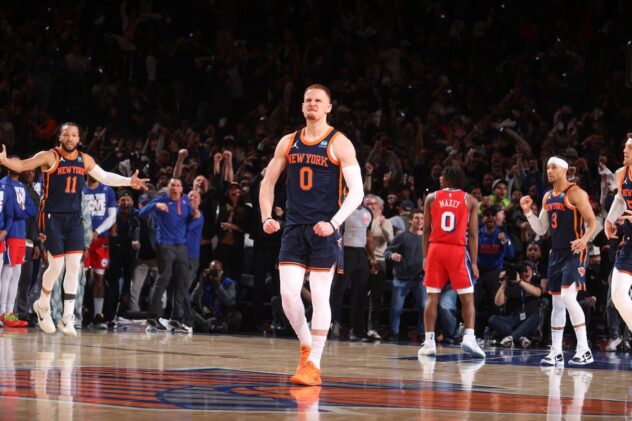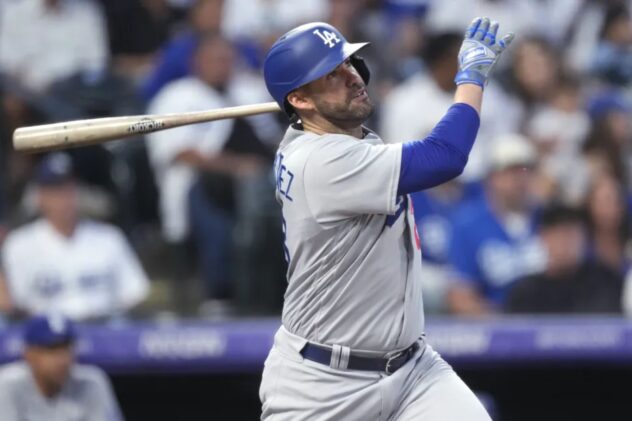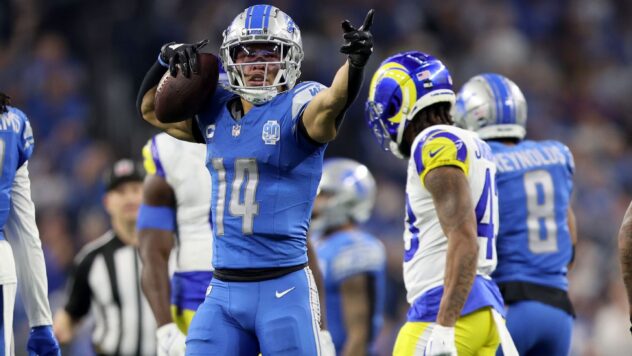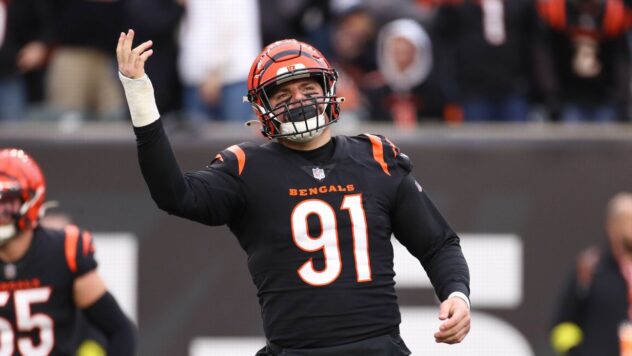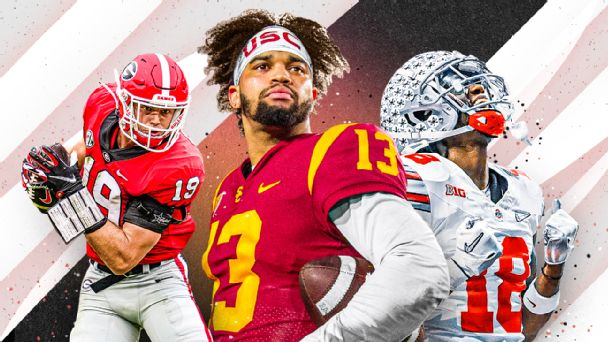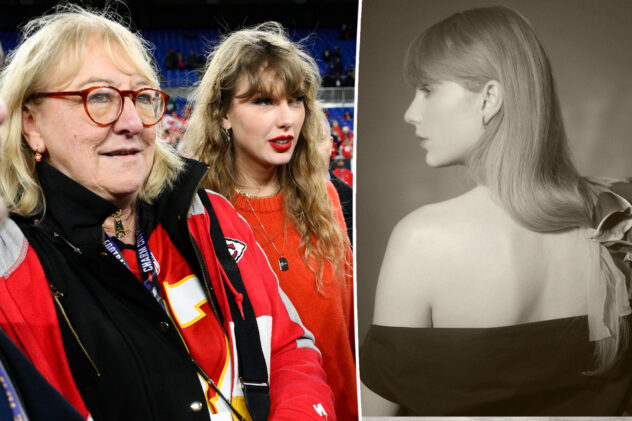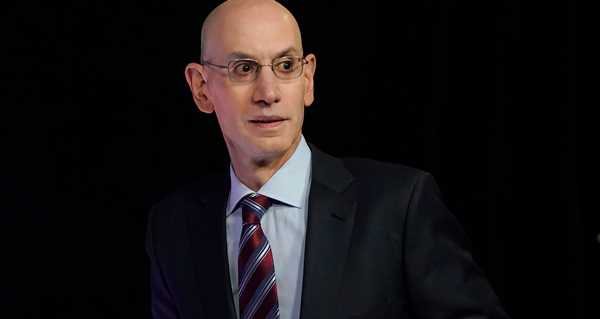A Master Class in how to defend the Rockets
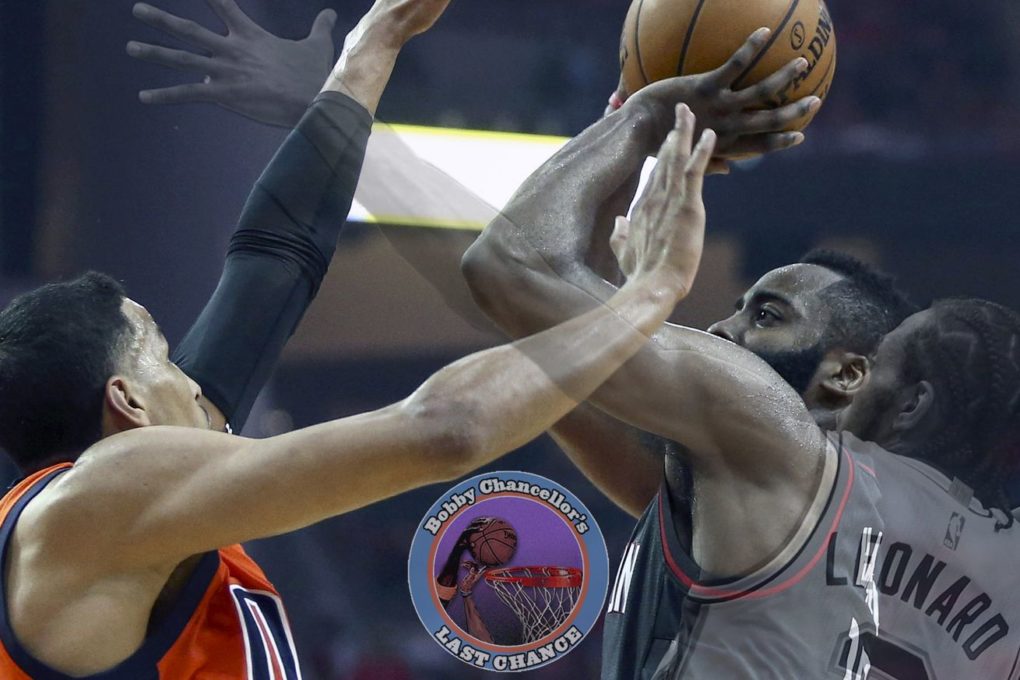
This how-to guide, written specifically for Spurs fans, was compiled during the first round while OKC held James Harden to well below his regular season efficiency numbers.
[Editor’s note: please welcome guest writer, Bobby Chancellor, of Welcome to Loud City, Thunder fan and defensive acolyte. – J.R. Wilco]
In light of the upcoming series between the San Antonio Spurs and the Houston Rockets, and given the 5 games worth of experience that the Oklahoma City Thunder just gathered against James Harden’s Rockets, I wanted to share some of what you can expect to see, and how you should hope the Spurs respond in this match-up.
Specifically, this article will be looking at how to slow down James Harden by using the defense of Andre Roberson as example. While some of you may have watched the Thunder-Rockets series, I’m sure that many of you didn’t get the chance to see this offense-defense battle, and perhaps don’t realize that the blueprint for slowing the bearded MVP candidate has been laid out.
Though James Harden finished with seemingly stellar raw statistics, digging a bit deeper will show how much of a struggle this past series was for him. Not only did his efficiency fall (41% from the field, 24% from deep), the regular season turnover leader continued to average 5.6 give-aways per game while seeing his assists drop from 11.2 to 7. It was clear that he was wearing out as the series progressed, and while he placed the blame on a sore ankle (while saying “no excuses”), the real cause for his struggles was the smothering defense of Roberson. If I was considered an elite offensive player but had my shot blocked 9 times in 5 games by one guy, I might suddenly discover a debilitating injury too.
The Spurs are one of the only teams that’s well-equipped to slow the historically great Houston offense. I contend that Andre Roberson is the same tier of defender as Kawhi Leonard, and before you laugh at that assertion, you should know that Roberson’s post-season defensive stats are a wonder to behold; 2nd in blocks, 2nd in steals, 2nd in contested shots, 3rd in deflections, all while guarding one of the offensive greats. San Antonio has two all-defense caliber players to throw at the Houston star.
With that in mind, take a look at how Oklahoma City approached defending James Harden, and dexide if perhaps the Spurs can do the same.
1. Token Full-Court Press
During very single time James Harden attempted to bring the ball up the floor during the first round, he was met by pressure from Roberson as soon as the ball was inbounded. It wasn’t a hard press; the goal wasn’t to force a trap or a turnover. Rather, it was a token press, designed with 3 goals in mind.
a) Slow down the Rockets offense
Houston thrives in transition, and it can be difficult to find the proper matchups if Harden is allowed to set up the offense quickly. Getting a big matched onto Eric Gordon or Lou Williams can be a disaster (we’ll talk about this a bit more later), so slowing the initiation of the offense decreases the effectiveness of the offense.
b) Guide Harden away from his preferred spots.
The biggest thing that Roberson attempted to do was to keep the ball in Harden’s right hand. This can be a difficult task for a defenders who are used to forcing guys to their left. With Harden being a southpaw (who is notably less sure-handed when using his off hand), pushing him right whenever possible is a key defensive point. Pushing him to the right side of the floor and shading on his left side, constrains his offensive options.
c) Force the Houston offense to initiate further from the rim.
The gif below shows why this matters. When the offense is initiated from the midcourt logo, defensive recovery time doesn’t have to be as crisp. Help defenders have more time to make the read and slide over, the on-ball defender can recover from being screened, and Harden’s typical rhythm is disrupted because he has to take additional steps to reach the rim.
Notice that Harden receives the screen with his feet solidly within the midcourt logo. By the time he’a in a dependable scoring range, Roberson is back on his inside hip and Steven Adams has rotated to the rim. Faced with two much longer defenders, Harden has no choice but to try and find a safety valve, since the layup is no longer an option. Because the bracket defense at the rim doesn’t require much help (Victor Oladipo slides a step, but is still occupying both passing lanes), there are no options for the dump-off.
While the full-court press has the downside of wearing out the defensive player responsible (which, in the case of Kawhi Leonard, could have a serious impact on the offensive end), this is the starting point of frustrating Harden.
2. Midrange Shooting
I want to address something now, because it factors into how the Spurs defend the offensive sets discussed later.
Morey-ball has made James Harden less complicated to defend. I understand the statistics – the expected value of a shot at the rim or behind the arc is greater than the expected value of a midrange shot – but it entirely ignores the effect that added dimensions have on a defense.
Harden does not take midrange shots, to the point that, out of 107 shots in round 1, only 11 of his shots were not at the rim or behind the arc. In fact, when he is forced to stop prior to reaching the rim, he will openly turn down open shots to hunt for a bailout pass. Because of this, defending him in isolation or off of screens is simplified.
When you stop Harden in the midrange, good thing often happen. Watching here, he sees the lane to the rim is cut off by the length of Roberson and Adams, and while he could have either backed out or even settled for a midrange jump shot, he throws an ill-advised pass that floats like a lame duck, allowing Oladipo to intercept and start a fast-break opportunity.
But even when he is willing to shoot from midrange, he doesn’t look entirely comfortable. He has one move to get space (step-back) and while he is capable of hitting that shot, as he did over Oladipo later in the series, he doesn’t seem comfortable shooting it over a longer defender. Again, he seems hesitant in this range, likely due to his season long reluctance to take this shot.
3. Isolation
One of my favorite occurrences of the OKC series (following, of course, the two times in which Patrick Beverley got leveled by legal screens) was watching Harden try to take on Roberson in an isolation set. I’ve never understood offensive players facing one of the best defenders in the league and deciding that the best offensive response is to go 1-on-1. But it was seen with decent regularity this series.
Because of the lack of midrange I discussed previously, the biggest key to defending Harden is to not gamble, and use length and athleticism to recover. Defenders do not need to worry about him pulling up from midrange. If he doesn’t hit you with a 3 point shot, he’s going all the way to the rim.
From a help defense perspective, the key is to force him to a certain side. It doesn’t much matter which side, but it needs to be decisive. This allows the on-ball defender to pin the ball once it leaves his hand for the layup.
This play demonstrates what I mean by forcing him to a side. Steven Adams slides in such a way that Harden has to go right, and because of this, access to the left side of the rim is restricted. Roberson knows, based on this, where Harden has to bring the ball to finish. Rather than finishing the play by blocking a shot, however, he gets ahead of the game and strips the ball instead.
This is the primary way that Harden gets his (legitimate) 3-point shots. He likes to dribble into a 3, particularly at the end of quarters. For a right handed defender, this is a perfect opportunity for a block. By forcing him right, as I’ve said before (and will again), you give your dominant hand perfect access to his shooting hand. And because you don’t have to worry about him from midrange, you can sell out here and know that you’ll have time to recover…
… which is exactly what Roberson does. Harden gets him dancing just a little bit by faking the step-back that he often uses to set up a shot. But the step that Harden gets is negated because Dre can run straight for the rim. There is no threat between the 3 point arc and the rim, and Harden simply isn’t fast enough to prevent the recovery. His shot is swatted again.
Another advantage to forcing him right is that his dribble is much looser on that side. At least once, he dribbled the ball off of his foot out of bounds while being forced that direction. In this case, Westbrook reaches in and pokes the ball loose. Even if he hadn’t, though, Harden simply has no path to score here.
4. Pick and Roll
Most of Harden’s offensive opportunities come via basic screening; aometimes from a roll man, sometimes from Ryan Anderson popping out for a 3. It’s important to be able to guard against these screens, because these are the bread and butter (and entree, and dessert; basically everything except the drink) of the Houston offense.
The Thunder tried 3 main techniques for slowing the pick and roll offense of Houston. I’ll go through each of these, point out the conditions necessary for it to work, and give some pros and cons for each.
5. Switching
Game 1, OKC started the game with a switch-everything mindset. This seemed odd, since they had not employed this strategy when facing the Rockets during the regular season. Nevertheless, Donovan thought this a fitting strategy. Unfortunately, it was an entirely ineffective strategy for the Thunder.
For switching to work, it requires both defenders involved to be versatile, capable of defending each others’ matchups in isolation. In some cases, this is acceptable. For Oklahoma City, it was theoretically okay for Victor Oladipo or Taj Gibson to occasionally be guarding Harden. For San Antonio, screens involving Kawhi and Danny Green, for example, can be switched with little concern.
The primary problem with this method is the second screen. Usually, the best defender is guarding Harden (i.e., Roberson). He is the most capable at fighting over screens and recovering. Perhaps Taj Gibson can handle Harden in isolation (which he did successfully several times) but when a second screen comes, he cannot fight over and stay in position. This means a second switch is required, forcing the other big to defend. For OKC, this put either Steven Adams or Enes Kanter on an island against Harden. Bad, bad idea.
On this play, Semaj Christon (the Thunder’s backup Point Guard for the first 2 games) switched from Lou Williams onto James Harden. Then Nene came to set a screen, and Kanter was forced to guard Harden. Look at how this played into Houston’s hands. Kanter, a poor defender with cement feet, on Harden. Semaj, a small PG trying to box out Nene. Beyond that, Houston picked the spacing it wanted, drawing the only two players capable of playing help defense – Roberson and Jerami Grant – as far from the rim as possible. This may have been Harden’s easiest points of the series.
For switching to be effective, all 5 defenders need to be capable of defending the perimeter. I can only imagine that, for Spurs fans, Pau Gasol getting singled up on Harden on the perimeter would be a thing of nightmares. For this very reason, after the first game, Kanter almost never saw the floor at the same time as Harden. Also for this reason, the switching scheme was largely discarded after the game 1 blowout.
Pros: Will not be beaten by the initial screen; requires less energy from not fighting over screens; less risk of being called for a 3 point foul
Cons: Lets Houston choose the matchups; can put defenders in uncomfortable positions
6. Hedge and Recover
At times, OKC tried to hedge on the screens set for Harden. This was never the dominant approach, but occurred as a sort of change-up look at defending. To successfully hedge on a screen, both defender trap the ball-handler as they utilize the pick. Once the attack has been stopped, the help defender recovers to their man, either on the roll or the pick.
This method is generally most successful when the other team isn’t a shooting threat, or has a perimeter player who is trying to space the floor but isn’t a real concern. Essentially, it relies on a help defender to pick up the roll-man long enough for the hedger to recover.
Houston enjoys shooting 3s too much for hedging to work consistently. Someone will always be open for a split second with this scheme, and there often isn’t time to recover to a shooter without the defense being compromised. With Ryan Anderson really struggling from outside, however, Taj Gibson used this approach on occasion without being burned for it.
In this case, both the best and worst case scenarios can be seen. McDermott hedges, successfully stopping the drive to the rim. However, his man, Eric Gordon, pops out and is wide open, with little chance for recovering before the shot. However, Andre Roberson has fought over the screen and is riding Harden’s hip in the passing lane, and is able to break the pass up.
Pros: Can fluster Harden and force turnovers; usually stops the initial drive; without shooters there is ample time to recover.
Cons: Houston has shooters; can put the defense a step behind.
7. Hang Back
The primary defensive scheme used by the Thunder (with much success, relative to Houston’s average) was to have a big hang back from the screen action and effectively guard two players at once until Roberson could recover. This is actually the primary scheme used by OKC, and one I’ve criticized before. Against many teams, and with the wrong personnel, it can end very badly. For a split second, a big man is guarding two players, and the success of the play is contingent on the wing defender recovering quickly and effectively.
When those two players are Andre Roberson and Steven Adams, however, this scheme works perfectly. I’m sure Spurs fans remember Kawhi Leonard and LaMarcus Aldridge trying to run pick-and-roll against the pair just last off-season. The two work together extremely well, and largely responsible for OKC finishing in the top 10 for defenses.
Essentially, this relies on the big man doing two things. The first is slowing the drive of James Harden. Slowing the initial drive is required for the wing defender to recover. The second responsibility is playing the passing lane to prevent the lob for the big man. If the pair of defenders pull this off, none of the other 3 defenders have to leave their man to help, and suddenly Harden reaches the rim without a layup opportunity and with no passing options.
This shows the progression of reads that have to be made by the big man. Here, Adams hangs back, retreating slowly while watching Roberson. If Roberson cannot recover quickly enough, Adams is prepared to slide over and protect the rim. When he sees Dre matching Harden step for step, he instead moves toward Nene, preventing the dumpoff for a layup. No other defenders are helping here, meaning the kickout for corner 3s isn’t an option. Harden attempts the layup, only to meet the long arm of Roberson swatting his shot.
Roberson helps Adams out a bit here by pushing Clint Capela into Harden’s path. Again, by hanging back (and due to the lack of midrange threat) Harden runs out of real estate without a good option for finishing. He can’t score, there is not passing lane for Capela, and every shooter is defended. He attempts to make the pass to the corner, but it is more a desperation pass than a real option, and Westbrook easily picks it off.
On this play, the more athletic Grant doesn’t hang back as far, choosing instead to meet Harden on the 3 point line. This makes sense, given that he is guarding a shooter in Trevor Ariza. If Harden were to go to his right, Roberson would switch onto Ariza here. Given that Harden tries to cut back left, Dre is in perfect position to poke the dribble free.
This play demonstrates the importance of personnel. Enes Kanter valiantly attempts to meet Harden and achieve the same results as Steven Adams, but he fails right at step 1; he never commits to a direction. Had he angled his body to push Harden to the left side of the rim, Roberson would have had time to recover and contest the layup. By letting Harden choose the direction, not only is he too slow to contest, Roberson has a much more circuitous path to contesting, allowing Harden an easy layup.
Overall, this is the method of defense I suggest for when Harden gets a screen. It isn’t perfect, is largely personnel reliant, but it seemed to have the greatest effectiveness during the Thunder series.
Pros: No help defense rotations required; lack of midrange threat allows for amply recovery time.
Cons: Personnel dependent; puts a lot of pressure on two defenders.
8. 3-Point Fouls
I hate that I have to address this, but it is a very real part of Harden’s offense, and must be accounted for. I’m sure most of you have heard the statistic that Harden had more 3 point fouls than any single team in the NBA (disregarding the Rockets of course). Houston averaged about 12 free throw attempts per game during round 1 off of these 3 point fouls. Andre Roberson, who is very good at avoiding fouls, got burned by this several times, though he wasn’t the worst offender.
I say offender, but that isn’t really a good word for it. Against Houston, OKC defenders were being penalized for having arms.
Don’t believe me?
I’ll let you make your decision on this. According to Houston fans, Taj Gibson “puts Harden in an arm bar” on this play. But expect to see this a lot.
Also expect to see the battering ram approach to this foul call. Refs insist Harden was in the act of shooting here. Again, you make the call.
For those who aren’t aware of how this keeps working for Houston, the play works like this: Harden has a screen set for him above the break. As the defender tries to fight over the screen, the screener gives him a shove, forcing him to bump Harden. Harden reaches out, hooks the defender’s arm, and goes up for a pseudo-shot. Referees take the bait, hook, line, and sinker, and Harden trots to the FT line (where he averaged 14.6 attempts in round 1).
In reality, this should be called an offensive foul (per this video).
However, officials haven’t been calling it that way. At the least, you would expect them to adjust and call it similarly to how they began to call the rip move from years past (popularized by one particular #35) and have it side-out rather than a shooting foul. But OKC fans instead had the frustration of watching the call go the wrong way time and time again.
The Spurs have two advantages here. First, if Kawhi is guarding Harden, this call likely won’t be made. Superstars get calls, and defensive specialists don’t. Roberson didn’t have the reputation advantage that Kawhi does here. Refs also aren’t likely to call this on a Gregg Popovich coached team. Billy Donovan could watch a player get stabbed on the court and still wouldn’t raise his voice. Pop won’t let these calls go so easily.
That being said, it’s worth mentioning how to prevent the call. Roberson tried to simplify things by saying he would “let the refs see his hands” so that they couldn’t make the call, but it didn’t seem entirely effective.
The first thing a defender can do is to keep their hand on the screener. This doesn’t work if the defender gets pushed, but it keeps the hands in such a place that Harden is incapable of hooking them.
The second option is to push the screener, either into Harden’s driving lane or back toward the rim. This gives the defender room to make it over the screen without being within range of Harden.
Take heart though, because as the series progressed, we started to see the call change.
This flop attempt that left Harden bewildered was (properly) uncalled. When the refs don’t fall for Harden’s shenanigans, he also tends to commit a lot of unnecessary turnovers. This could play into the Spurs favor.
At long last, the refs made the call correctly. This decision left head coach Mike D’Antoni (and the ultra-biased Houston commenting crew) incensed, but it’s completely clear that Roberson had his arm pinned to his side and Harden hooks it. This is a potentially dangerous play for the defender, who’s shoulder is put at risk due to the flailing of Harden. Fortunately, the ref had enough of the antics and called this an offensive foul.
Perhaps that means the league has had enough. The games slowly gravitated to being borderline unwatchable because the defense was being penalized for merely existing.
9. 3-Point Shooting
I won’t dive deeply into this, but let’s just say that right now, Harden isn’t a huge 3 point threat. Obviously, leaving him open isn’t an ideal choice. But after shooting an average 34.7% during the regular season, he is shooting a cool 24% during the postseason on 10 attempts per game. Some of his misses have been spectacularly bad as well. These shots should be contested but not so much so that the defensive scheme is compromised.
I mostly just wanted to include this clip of Harden airballing a 3 badly. Really badly.
10. Passing
One of the best offensive skills of Harden is his ability to find open men. In an offense dominated by outside shooting, having that distribution makes the offense tick. However, against the Thunder Harden averaged only 7 assists per game, well down from his regular season mark.
A large part of this was the pick and roll scheme. I mentioned the benefits of having the big man hang back, and how that prevented the need for help defense to slide over. This helped to reduce the kick out opportunities.
The other area of concern is the lobs he likes to throw to Capela in particular. Again, having a big hang back often prevents this if the big is athletic enough to disrupt the pass. The goal of that big is to protect both the rim and the passing lane. In the rare occasion that the wing defender cannot recover and the big has to commit to Harden, blowing up the lob falls to the trailing wing defender.
Here is the perfect illustration of the effectiveness of hanging back. Adams and Roberson force Harden to give the ball up, but Adams is sitting in the passing lane. Trying to get a pass over a seven footer isn’t easy, and Harden overthrows Capela significantly.
On this play, Adams commits to Harden as the help defender. The responsibility for breaking up the lob falls on Roberson. By recognizing this quickly, he is able to beat the pass to Capela, and pokes the ball out.
Harden, for all his brilliance passing the ball, can be predictable at times. Once he gets into the paint, he’s primarily looking for his big. That doesn’t mean it’s easy to prevent the pass from getting there, but knowing is the first step for breaking it up.
To be entirely honest, I included this clip more for the save than for the deflection. It demonstrates what I mean about Harden looking for his big; Ariza is wide open in the corner but Harden tries to force the wrap-around pass to Nene. But what awareness by Roberson on the save, to establish himself clearly inbounds, find an open man, and make the grab and pass.
Conclusion
I’ve attempted to break down Harden’s entire offensive game and how the Thunder and Roberson defended it (successfully, I might add, with Houston having only a 103.3 ORtg with Dre on the court). I’m sure I’ve come up woefully short, but I hope it’s been an interesting (albeit way too long) study. I’m interested in your thoughts on the matter, and will likely watch at least some of the games between the Spurs and Rockets (there is nothing better than watching great defenders in their element).
I’ll leave you with what was probably my favorite Roberson play of the season: the pick pocket followed by a monster screen on Patrick Beverley. You can draw your own conclusions why.
***
Bobby Chancellor is author of the column Last Chance at Welcome to Loud City. Thx for letting him share his analysis here at PtR.
Source: Pounding The Rock

